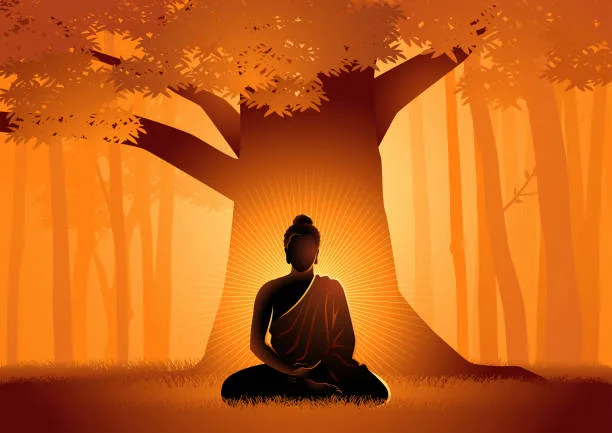Ekadashi Vrat is an occasion of great importance in Hindu rituals and ceremonies. The 11th day after the full moon or the new moon is known as Ekadashi. Ekadasi is the Sanskrit word for “eleven,” which is a fitting name for this auspicious day. Twice a month, it occurs during the waxing and waning phases of the moon.
These days correspond to the days when the tides rise and fall. When the moon is in its closest orbit to Earth, the first Ekadasi takes place, and when the moon is farthest away from Earth, the second Ekadasi takes place.
Every year, there are 24 Ekadashi vrat, or fasting days honoring Vishnu. According to the Hindu calendar, today is the eleventh lunar day of the months of Shukla Paksha and Krishna Paksha. a prayer to Vishnu, the Hindu god. There are religious celebrations today in both Hinduism and Jainism. Followers take part in the festival by fasting for different amounts of time or by going completely Nirjala (without water) for the whole time.
Ekadashi: What it is and Why It Matters
One day, the great sage Vyasa was asked by the famous sage Jaimini Rishi about the Ekadashi vrat (fasting). Vyaasa says that when the world was made, Lord Vishnu made the demon Paapa-Purusha, who represented every sin that could be imagined. This was done as a form of punishment for all intelligent beings who chose the dark side. He also made Yamaloka, which is the heavenly jail where all sinners (those who have Paapa-Purusha) are locked up.

When Lord Vishnu visited Yamaloka, he saw the beings there in their “corrected” states and felt compassion for them. So He created Ekadashi from nothing and decreed that anyone who takes the Ekadashi vrat will be forgiven of their sins and saved from eternal imprisonment in the cosmic penitentiary.
When the Paapa-Purusha found out, they panicked. Right away, he went to pray to Lord Vishnu about how the Ekadashi vrat was going to cause people to go hungry. Therefore, the Supreme Godhead blessed him to spend the Ekadashi days among the grains, beans, and cereals. Anyone who uses them on the Ekadashi may be subject to his influence. This made the paapa-purusha very happy.
Since the Ekadashi vrat is such a great day for atonement, it is also reverently observed as Lord Hari’s day (the day of the Supreme Lord God).
the significance of the Hindu holy fasting days of Indira Ekadashi vrat
On the eleventh day of the Krishna Paksha comes one of the most auspicious days, known as Indira Ekadashi. This day is celebrated in the month of Ashwin, which is the Pitru Paksha in the Hindu lunar calendar.
The purpose of the vrat is to inculcate positivism and inspire devotion to the Almighty through the practice of puja and vrat, which are common in India.
For Hindus, the most important reason to fast on Indira Ekadashi is to remember and pray for their ancestors who have passed on. Adhering to this fast cleanses one of all guilt for past wrongdoings and major errors. The process might help one ask for and receive forgiveness.
People believe that King Indra, who ruled the ancient Indian kingdom of Mahishmati Pura, was a devoted follower of the god Vishnu. This is what legends say. In the course of his travels, Sage Narada found himself at the king’s court. The Sage described his encounter with Yamraj, the God of Death, in Yamlok. Sage Narada encountered the king’s sorrowful father at the Yamlok. When questioned, the wise man revealed that his path to moksha was hopeless.
The king’s father asked Sage Narad to relay his desire for ultimate liberation from life and death to his son, the monarch. So the king had an Indira Ekadashi vrat and puja performed for his dad so that he could find salvation and die at the feet of Lord Vishnu in heaven.
Importance of Fasting on Indira Ekadashi
Happiness, success, money, and goodwill are bestowed upon devotees through this puja. When you are forgiven for your wrongdoings, you will feel a sense of calm and contentment in your mind. Hindu scriptures and holy books say that those who follow the Indira Ekadashi vrat puja will receive the blessings of the Ashwamedha Yagya. It is also mentioned in the “Brahma Vaivarta Purana,” which Lord Krishna told Yudhisthira.
As part of the traditional Puja Vidhi, the day before the puja, prayers, and yagnas are held for the family’s loved ones who have died. Devotees also carry out Shradh rituals on a designated day.
They also allow themselves one meal on Dashami but fast on puja days. An integral aspect of the ceremony is the worship of a statue of Vishnu. Fans of the Lord might give him flowers, tulsi leaves, and other things needed for puja.
Vishnu temples are also frequented by believers who want to pay homage to the god and seek out his favor. Devotees can resume eating and drinking normally once the vrat is over. The religious leaders, including priests, are also given food offerings. In addition, the followers remain up all night to sing devotional songs and hear tales of Lord Vishnu.
The Logic of the Ekadashi vrat
In the meantime, modern science has shown that the atmospheric pressure on Earth varies to unprecedented levels on both the new moon (Amavasya) and full moon (Purnima) days. This is due to the alignment of the sun, moon, and earth’s orbital paths.
To see this in action, just pay attention to how the tidal waves behave around the new moon and the full moon. The waves are quite high and turbulent, but they gradually quiet down the following day, suggesting that the pressure has dropped along with them.
Interpretations of the meaning behind Ekadashi vrat:
First, today’s food takes roughly three to four days to go from our stomachs to our brains, according to research. Now, if we restrict our caloric intake or fast on Ekadashi days (Ekadashi Vrat), the resulting nutrients will be delivered to the brain on the New Moon or Full Moon days.
Both of these days have peak earth pressure, which can throw off one’s equilibrium in ways beyond the physical.
If the brain receives as little information as possible, there is less of a possibility that it will engage in inappropriate behavior as a result of the high-pressure imbalance.
Second, on the Ekadashi days, the air pressure is the lowest. This may be why people traditionally don’t eat or drink on these days. Therefore, it is the perfect moment to fast and do a colon cleanse. Because of the enormous strain and pressure, fasting on any other day could be harmful to our health. Therefore, it is recommended that we rise early on the Dwadashi, the day after the Ekadashi, vrat and eat as quickly as possible.
Both of these explanations suggest that the Ekadashi fasting practice has solid scientific backing. People who are fasting are told to eat a lot of nuts, milk, fruits, and vegetables and not a lot of carbs.
A fast is a period of rest for the body. A little bit of overeating or dietary indiscrimination could lead to overworked physiological systems. Therefore, the body is given an opportunity to catch up every two weeks during the Ekadashi vrat. This is because the digestive system is known to direct blood flow to the digestive organs.
Because of this, we feel sleepy after eating because less blood is going to the brain. Thus, the practice of Ekadashi vrat allows us to refresh our mental faculties, allowing us to remain mentally agile and fully present.
Practising Ekadashi Vrat
Ekadashi vrat, practiced every two weeks, has been shown to increase insulin sensitivity, reduce blood cholesterol, and increase longevity when combined with a nutritious diet. People who struggle with mood disorders like anxiety and depression benefit from this. As an added bonus, it helps the kidneys and liver filter out toxins and purify the blood.
The Ekadashi tithi is a day on which grains are not eaten since doing so is considered detrimental to one’s spiritual well-being. Following Lord Vishnu’s directives, this is where all the evil activities of the material world make their home (grain). Anyone who observes Ekadashi vrat (fasting) is absolved of their crimes and protected from the fires of hell. Even if someone is mistaken and doesn’t keep Ekadashi, he or she is still the worst sinner.

Every grain consumed is the equivalent of millions of Brahman deaths. To observe Ekadashi, one must completely abstain from consuming grain. Even if someone observes Ekadashi dishonestly, his sins will be washed away, and he will find it easy to reach Vaikuntha, the ultimate goal.
Vratas, or “acts of austerity,”
What can be consumed during Ekadashi vrat
Partially fasting on milk and fruits is recommended. The main goal of this practice is not abstinence, but rather to think about God and the divine by thinking about Krishna’s adventures as they are described in his stories. At sunrise on Ekadasi day, the fasting period begins and lasts until the next morning’s sunrise.
Fruits, nuts, potatoes, sweet potatoes, olives, milk, ghee, sugar, coconut, ginger, and black pepper are all acceptable foods to consume on Ekadasi vrat day. Avoid eating any foods that contain any of the following: cereals, lentils, hing, sesame, beans, or spices.
Do not use ghee that has been used to fry puris or spices that have been handled by hands that have been in contact with chapati flour. On Ekadashi, there is no doubt as to what is forbidden to consume. ANNA-grains. Fruits, vegetables, nuts, and milk were all on the list of permissible foods. You should be alright if you eat only these foods. A total fast is the only surefire method. Water can be consumed without question. except if you’re set on performing Nirjala.
Those who are particularly serious about keeping the Ekadashi vrat or the fast should abstain from all spices other than pepper, rock salt, and cumin. Tomatoes, cauliflower, eggplant, and greens are among the vegetables he should avoid.
When to break the Ekadashi Vrat
Dvadashi is the day following Ekadasi when the Ekadashi vrat or the fast is broken. The breaking of this fast is an integral part of the Ekadashi vrat ritual.
After the devadasi daybreak and after the first quarter of the devadasi tithi has passed but before the tithi ends, one may break their fast. A morning bath is followed by the upavasa, an offering to God.
Oh Kesava, please accept this vrat offering from a devotee who has sunk to the lowest of the dark modes. God, please cast your knowing eye over me.
Disclaimer:
The author’s views are his or her own. The facts and opinions in the article have been taken from various articles and commentaries available in the online media and Eastside Writers does not take any responsibility or obligation for them.
Note: Contact our Writers at www.eastsidewriters.com for writing Blogs/Articles on any niche. We have experts in various domains from Technology to Finance and from Spirituality to Lifestyle and Entertainment.






